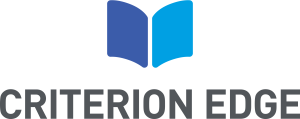Author: Ashley Self
I’m staring at a large pile of medical writing resumes on my desk. Is yours in it? Can I tell from one glance whether you are a good candidate for the position? Will the format and content of your resume make me want to read the entire thing?
If you dread updating your medical writing resume or CV, you are not alone. Of all the critical documents you produce, this is one that requires the perfect balance of accuracy, brevity and noteworthiness. There are a lot of ideas and tactics for making your resume shine, and that can make it easy to go overboard. What I am looking for is a true representation of your experience and skills. I can discern between facts and embellishments, and I prefer facts, even if that means your resume is a little shorter than other examples you may be trying to follow. Your transparency also helps me place you in a position where you will thrive, ensuring what will hopefully be a long-term relationship. (Note: honesty and transparency are equally valued during the interview phase.)
Crafting a resume that stands out can be difficult, but it is well worth the effort. And you can start by doing the following:
Nailing the First Impression
Let’s be honest. I skim through the resume pile. Therefore, it’s very important that you highlight relevant information and format your document to make that information easy to find. The order in which you list your experience and expertise will vary depending on your background (read Resume 101 below). What’s more important is how you present it.
Resume 101
Basics Every resume should include the basics: summary, professional experience, education, skills, specializations, certifications, and published works. If you are just starting off in your career and have more education than experience, it’s OK to highlight your skills and education first. To flesh out a resume early in your career, list specific coursework and projects you worked on during your education.
Keywords If you are applying for a job described as: medical writer with experience with CER writing, FDA regulatory approval guidelines and MDR guidances in the medical device field, the key parts of your resume should feature those keywords. The keywords should appear naturally within your summary and professional experience, rather than seem
Customizing Ideally, you will customize your resume for each job you apply to. This will allow you to tweak your summary, keywords and bold/highlighted type to appeal to the specifics of the particular position.
Continuity The experience and expertise listed in your resume should match whatever you have listed online on your personal website, LinkedIn profile and other professional profiles.
Format Use only the most basic formatting tools on your resume. That will ensure that it can be read properly by automated scanning software (if the company you are applying to uses it). If file format is not specified, it’s best to submit your resume as a PDF, as a PDF is static and can be read by almost anyone without shifts in formatting. Within the body of your resume, you can use varying font sizes, all caps, and bold to call out each section, and even horizontal and vertical lines and indents to help organize the information. The rest—such as color blocks, graphics and playful fonts—is best left for more creative presentations. Consistency in style and simplicity in design are key. The proper use of formatting is also a chance to show off these valuable skills to your employer.
Applications While it sounds a little old fashioned, most hiring managers in the medical regulatory field want to know that you have experience working with complicated Microsoft Word and Excel templates and formatting.
Proofread If you aren’t an amazing proofreader, ask someone else to look over your resume before you submit it. One trick I like to do is copy and paste the text into a new document and then change and/or enlarge the font and re-read the text. That can help you locate small mistakes you may have missed.
A Quick Note About Recruiters Any recruiter inquiry should be treated with the respect and professionalism you would give your potential supervisor. Often recruiters aren’t as familiar with the details of the position or as knowledgeable about the field of work as the employer would be. This can be misleading to candidates who incorrectly assume the position isn’t worth pursuing. Dismissing a recruiter’s request could cost you a great opportunity.
Your resume layout doesn’t have to be fancy. It should be simple and easy to read, with a clear delineation between sections. Don’t be afraid to use bold type, bullet points and sub-headings to highlight work experience and expertise that is directly related to the job you are applying for. This will draw my eye and make scanning much more efficient. Just be wise about what you highlight; a few words within each block will suffice.
A brief but rich summary statement at the beginning of the resume is also a great place to let me know exactly what I might find interesting within your resume body. Here, again, if your experience is extensive, you can follow the summary with a bulleted list of relevant specifics.
For example:
Summary: I have over 20 years of experience bringing large and small medical device manufacturers into regulatory compliance in five countries. I’ve supervised clinical trials and managed data collection, quality control and labeling to help several manufacturers meet global regulatory guidelines.
- X subject matter expert • CE marking and UDI compliance experience
- Project and team management • RIMS design and implementation
Finally, if your work experience is comprehensive, you can provide a short summary of career highlights to call out specific accomplishments as an introduction to your professional experience section.
The keyword here is “specific.” These sections must be succinct, and should include details, not generalizations.
Demonstrate Your Own State of the Art
Now that you have caught my eye, use the professional experience and education sections to back up your claims. Match the text you have called out in your summary section within each job description and highlight accomplishments in addition to outlining your duties. Be specific: instead of “responsible for regulatory compliance for all products” try “brought 25 legacy and 12 new products into compliance with new MDR guidelines.”
If you have many years of experience, your resume may be quite long. In that case, feel free to provide a separate document highlighting your relevant experience and accomplishments relating to a specific skill (e.g., a list of all the CERs you have prepared, details on regulatory statements you managed for a specific device category, etc.)
Similarly, a separate page with links to published work or accolades is better than listing those within the body of the resume where they may get lost.
If your resume is short, it’s OK to highlight your specific skills. Accuracy, the ability to work with a team, the ability to meet deadlines, problem solving in a crisis, etc. are all great skills in medical regulatory writing. If you don’t have an abundance of professional experience, but you worked on a project where these skills stood out, be sure to mention it.
Conclusion
Not all of us have a “door busting” resume with five pages of extensive industry experience. And that’s OK, as long as you are applying for a job that is appropriate for your level of experience. The golden rule is to present your actual skills in a way that is attractive and easy to understand. That alone demonstrates a proficiency that is important to all medical writing hiring managers: the ability to organize data and information in a clear and concise way. And that’s something I will never undervalue.
Once you have completed your resume, the next step is to get your name out there: Successful Networking in Two Easy Steps
Is your resume ready to get out in the market? Are you ready to apply? Check out our Careers page.





